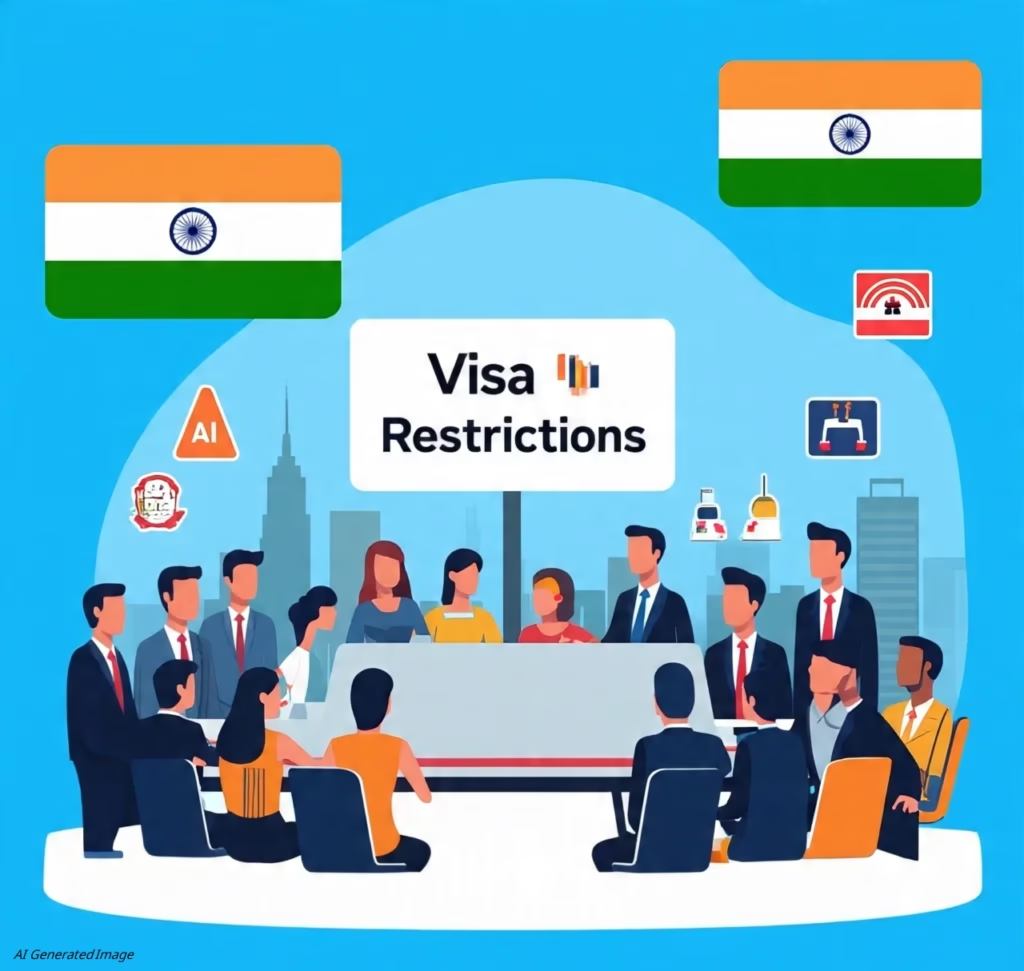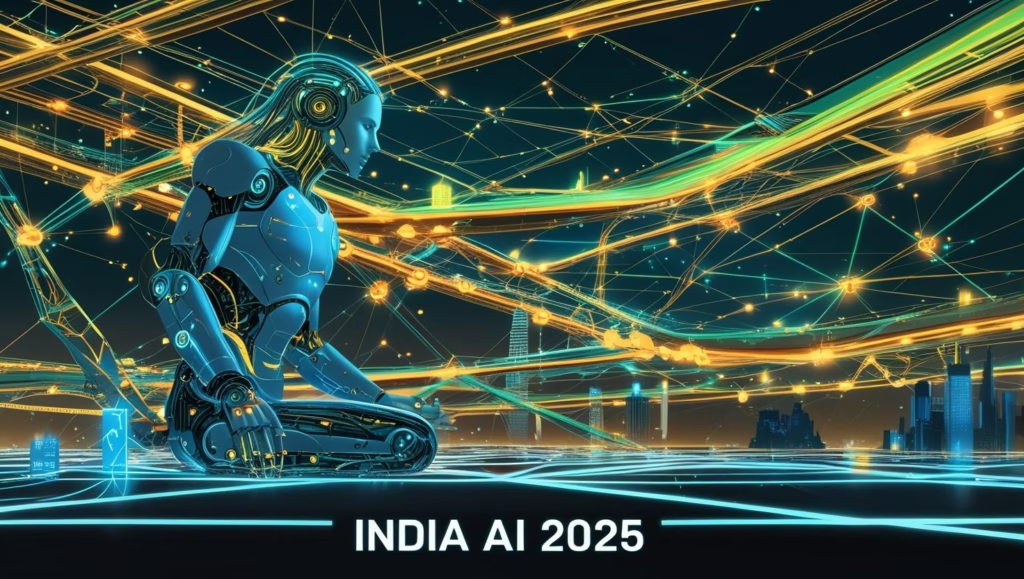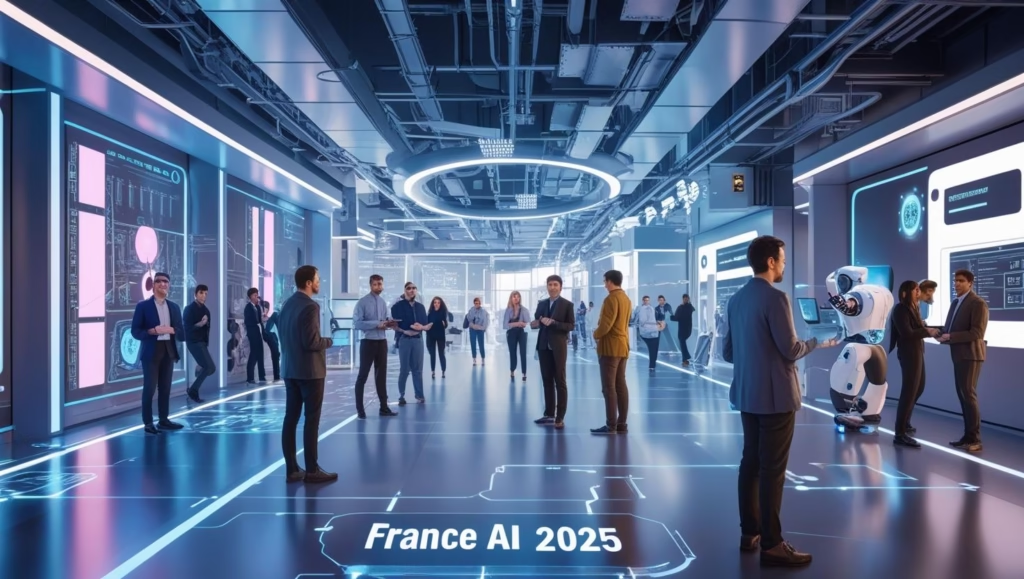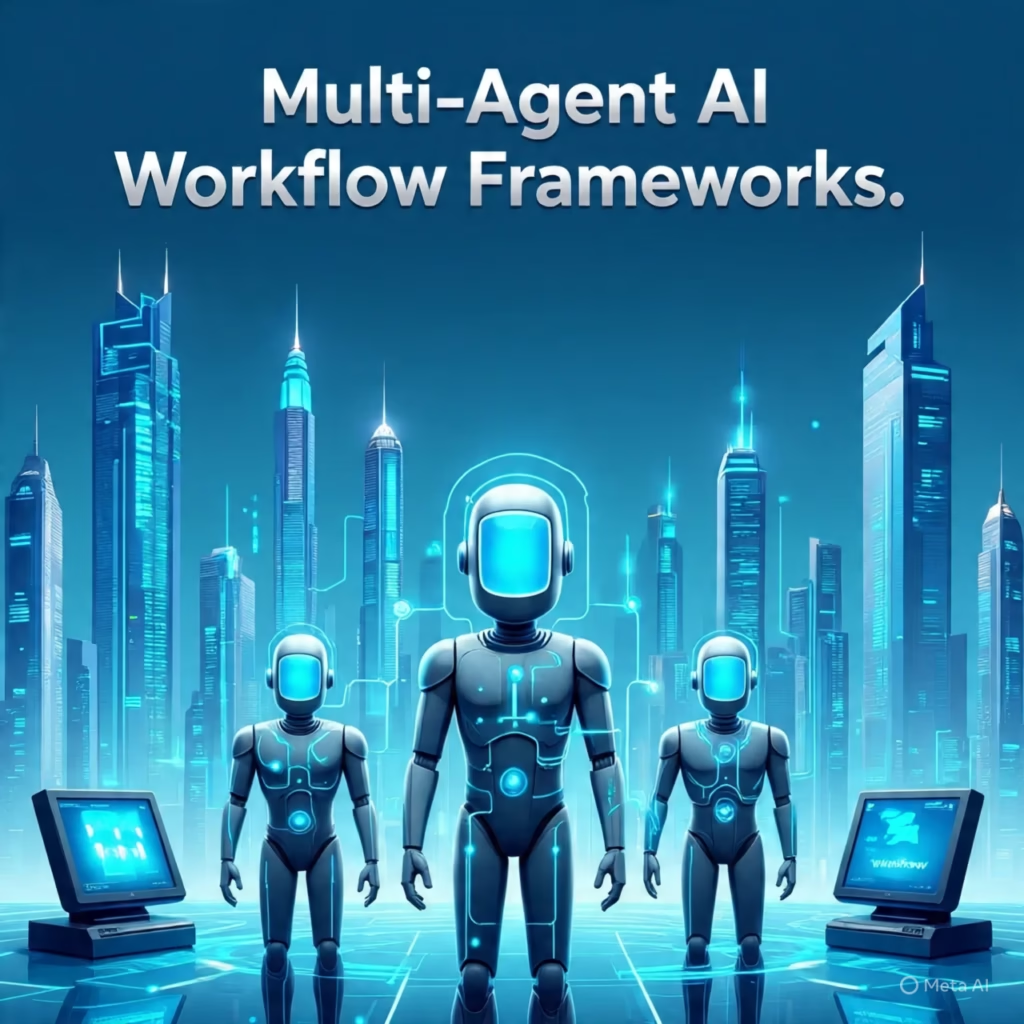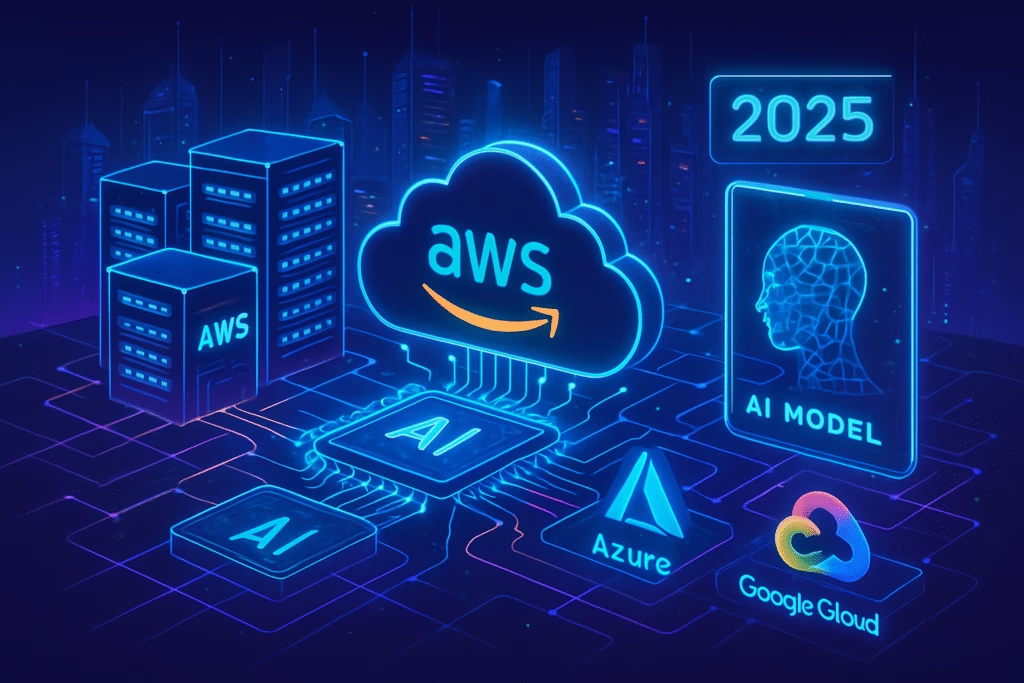The Hidden Cost of Cutting Visa Access: How Restricting Indian IT Talent Threatens America’s (USA) Digital Future
The United States stands at a critical crossroads in its digital transformation journey. While the country pours unprecedented resources into artificial intelligence and emerging technologies with digital transformation spending expected to exceed $1 trillion in 2025 restrictive visa policies targeting Indian IT professionals threaten to undermine the very foundation of America’s technological supremacy. This isn’t merely an immigration story; it’s a tale of economic interdependence that could reshape the global competitive landscape in ways that few policymakers fully comprehend.
The Backbone of America’s Digital Revolution: Indian IT Workforce
A Partnership That Built Silicon Valley
The story of America’s digital ascendancy cannot be told without acknowledging the profound contributions of Indian IT professionals. Indian tech companies have injected $198 billion into the US economy, directly supporting 1.6 million American jobs an economic impact larger than the combined economies of 20 US states. This isn’t just about outsourcing; it’s about a symbiotic relationship that has powered American innovation for decades.
Consider this: one-third of all tech employees in Silicon Valley are of Indian origin, and 25% of Silicon Valley startups are managed by people of Indian heritage. These aren’t just statistics they represent the human infrastructure that has enabled American companies to maintain their global technological edge. From Satya Nadella at Microsoft to Sundar Pichai at Google, Indian-origin leaders helm some of America’s most valuable corporations, collectively generating nearly $1 trillion in revenue.
The numbers tell a compelling story of integration and mutual benefit. Indian IT companies work with more than 75% of Fortune 500 companies, most headquartered in the United States. They’ve invested over $1.1 billion in strengthening America’s STEM talent pipeline, demonstrating a commitment that extends far beyond business transactions.
The AI Revolution’s Indian Architects
As artificial intelligence reshapes industries, India’s 5 million-strong tech workforce includes nearly 500,000 AI and data science specialists a talent pool that American companies increasingly rely upon. Microsoft’s Ahmed Mazhari revealed that 25% of AI projects on GitHub originate from India, with predictions that India will surpass the US in AI innovation by 2026.
This isn’t just about cost savings anymore. Indian engineers are building the AI systems that will define America’s competitive advantage in the global race against China. When American companies face a critical shortage with 11 job postings for every available IT worker Indian talent fills gaps that would otherwise remain vacant.
The Current Policy Landscape: Short-Term Thinking, Long-Term Consequences
H-1B Restrictions and Deportation Reality
The Trump administration’s renewed focus on immigration restrictions has created an atmosphere of uncertainty that ripples through America’s tech ecosystem. Recent reports indicate that laid-off H-1B visa holders are receiving deportation notices even within their legally allowed 60-day grace period. This represents a fundamental shift from established immigration practices and creates a chilling effect on foreign talent acquisition.
The proposed changes to the H-1B program include:
- Raising minimum salary requirements from $60,000 to $120,000 or higher
- Implementing a points-based system that favors elite workers over fresh graduates
- Enhanced compliance requirements and specialty occupation verification
While these changes aim to protect American workers, they risk creating a talent vacuum at precisely the moment when demand for tech jobs is expected to grow from 6 million to 7.1 million by 2034.
The Paradox of Restrictive Immigration During a Skills Crisis
The timing of these restrictions couldn’t be more problematic. IDC predicts that by 2026, more than 90% of organizations worldwide will face an IT skills crisis, costing approximately $5.5 trillion in losses. Meanwhile, 72.3% of H-1B visas currently go to Indian nationals, suggesting that any significant reduction in Indian IT workers will disproportionately impact America’s ability to fill critical technology roles.
This creates what economists call a “policy contradiction” restricting access to skilled workers while simultaneously facing the largest tech talent shortage in history.
Impact Analysis: The Ripple Effects Across America’s Digital Economy
Enterprise and Startup Ecosystem Disruption
American enterprises have become deeply dependent on Indian IT talent for their digital transformation initiatives. With global digital transformation spending approaching $4 trillion by 2027, companies cannot afford disruptions to their technology implementation strategies. The impact manifests in several critical areas:
Cloud Migration and Infrastructure: Indian IT professionals have been instrumental in helping American companies transition to cloud-based architectures. Major cloud adoption initiatives, which form the backbone of modern digital strategies, rely heavily on expertise that Indian companies provide.
AI and Machine Learning Implementation: As companies race to implement AI solutions, the shortage of AI-specialized talent becomes a competitive bottleneck. With 25% of large corporation CIOs expected to be held accountable for digital business results by 2024, the inability to access skilled AI talent directly impacts corporate performance metrics.
Innovation Slowdown and Competitive Disadvantage
The broader implications extend beyond individual companies to America’s competitive position globally. China’s aggressive AI strategy, outlined in its recent “Global AI Governance Action Plan,” positions the country as a more welcoming destination for international talent. While America restricts visa access, China promotes open cooperation with fewer political conditions, potentially attracting the very talent pool that America is alienating.
Goldman Sachs Research indicates that AI could displace 6-7% of the US workforce, but this transition requires unprecedented reskilling and workforce development efforts. Indian IT companies have historically played a crucial role in bridging skill gaps through training programs and knowledge transfer initiatives.
US-India Tech Collaboration: A Strategic Partnership at Risk
Historical Context and Strategic Importance
The US-India technology partnership represents one of the most successful examples of globalized innovation. Since 2017, employment in the Indian tech sector within the US has grown by 22%, with average wages reaching $106,360 well above the national average. This partnership has enabled:
- Accelerated innovation cycles through 24/7 development models
- Cost-effective scaling of technology initiatives
- Access to specialized expertise in emerging technologies
- Cultural bridge-building that enhances US companies’ global reach
Future Trajectory Under Current Policies
If current restrictive trends continue, the US risks losing its position as the preferred destination for global tech talent. Countries like Canada, Australia, and the UK have already implemented more welcoming visa policies specifically designed to attract the talent that America is turning away.
The economic implications are staggering: if just 10% of current Indian IT workers in the US were to relocate to other countries, the immediate economic impact would exceed $20 billion in lost GDP contribution.
Mitigation Strategies: Policy Reforms and Alternative Approaches
Short-Term Tactical Responses
American companies are already adapting to visa restrictions through several strategies:
Local Hiring Initiatives: Major Indian IT companies have increased their US hiring by 40% since 2020, creating more jobs for American workers while maintaining operational continuity.
Nearshoring and Distributed Development: Companies are establishing development centers in Canada, Mexico, and other countries with more favorable visa policies, potentially reducing direct US economic benefit.
AI-Augmented Development: Increased investment in AI-powered development tools to compensate for talent shortages, though this approach cannot fully replace human expertise in complex problem-solving.
Long-Term Strategic Solutions
Policy Reform Recommendations:
- Graduated Visa System: Implement a system that balances American worker protections with talent acquisition needs
- Skills-Based Immigration Pathways: Create specific visa categories for in-demand technology skills
- University Partnership Programs: Expand pathways for international students in STEM fields to transition to permanent employment
- Regional Development Incentives: Encourage tech companies to establish operations in economically disadvantaged American regions
Corporate Adaptation Strategies:
- Intensive Training Programs: Invest heavily in reskilling American workers for emerging technology roles
- Community College Partnerships: Collaborate with educational institutions to build local talent pipelines
- Remote Work Infrastructure: Leverage global talent through distributed work arrangements
- Innovation Hub Development: Establish international development centers to maintain access to global expertise
Future Predictions: Two Divergent Paths
Scenario 1: Continued Restrictions
If current restrictive policies persist and expand:
- American companies will face increasing difficulty meeting digital transformation timelines
- China and other countries will attract displaced Indian talent, strengthening their competitive positions
- Innovation cycles will slow, potentially costing American companies market leadership in critical technologies
- The total economic cost could reach $100+ billion annually by 2030 through lost productivity and delayed digital initiatives
Scenario 2: Policy Reversal and Strategic Cooperation
If policies shift toward strategic talent attraction:
- Enhanced US-India technology cooperation could accelerate American AI development timelines
- Increased foreign investment in American technology infrastructure
- Strengthened position in the global competition with China for technological supremacy
- Potential economic gains of $200+ billion through accelerated digital transformation and innovation
Frequently Asked Questions
Q: How does restricting Indian IT workers specifically impact AI development in the United States?
A: Indian professionals represent nearly 500,000 AI specialists globally, with many contributing to cutting-edge AI research in American companies. Restrictions limit access to this specialized talent pool precisely when AI development requires unprecedented expertise and scale.
Q: What percentage of American tech companies currently rely on Indian IT services?
A: More than 75% of Fortune 500 companies work directly with Indian tech firms, indicating deep integration into American business operations. This dependency means that significant restrictions could disrupt operations across the majority of major American corporations.
Q: Are there alternative solutions that don’t involve immigration policy changes?
A: While companies are pursuing local hiring, AI augmentation, and nearshoring strategies, these approaches cannot fully replace the scale and expertise that Indian IT professionals provide. True mitigation requires balanced policy approaches that address both worker protection and talent access needs.
Q: How do other countries compare in their approach to attracting global tech talent?
A: Canada, Australia, and European countries have implemented more streamlined visa processes specifically designed to attract technology workers. This creates a competitive disadvantage for the United States in the global talent marketplace.
Q: What’s the timeline for seeing economic impacts from current policy changes?
A: Immediate impacts are already visible in the form of delayed projects and increased operational costs. Long-term impacts, including innovation slowdown and competitive disadvantage, will become apparent within 2-3 years as current talent pipelines are depleted.
Conclusion: Choosing America’s Digital Destiny
America stands at an inflection point in its digital future. The choice is stark: embrace the global talent that has powered its technological dominance, or retreat into protectionism that undermines the very innovation ecosystem that created Silicon Valley’s success. The Indian IT workforce hasn’t just contributed to America’s digital economy they’ve helped define it.
The data is unequivocal: restricting access to Indian IT talent risks more than $200 billion in economic activity and 1.6 million jobs. As China aggressively courts the talent that America is turning away, the strategic implications extend far beyond immigration policy into the realm of national competitiveness and security.
For policymakers: The challenge isn’t choosing between American workers and foreign talent it’s creating systems that leverage global expertise to create more opportunities for everyone. The countries that will lead the AI revolution are those that can attract and retain the world’s best minds, regardless of their birthplace.
For enterprises: The time for contingency planning is now. Digital transformation initiatives cannot wait for perfect policy environments. Companies must develop robust strategies that ensure access to critical expertise while supporting domestic talent development.
For workforce planners: The future belongs to those who can navigate the intersection of human and artificial intelligence. Indian IT professionals have demonstrated unique capabilities in this space, making them valuable partners rather than competitors in building America’s digital future.
The choice is America’s to make, but the window for strategic decision-making is rapidly closing. In the global race for technological supremacy, the countries that embrace collaboration and talent mobility will shape the future while those that don’t will watch from the sidelines.
References
- Top 10 Key Digital Transformation Strategies for 2025 – Sekel Tech
- H-1B Visa 2025: How and why US policy shift may not make a big impact for Indian engineers and IT professionals – Times of India
- Navigating the tech talent shortage | Deloitte Insights
- Nasscom: Indian Tech Cos Employ Over 2l In US – The Times of India
- Indian tech firms contributed over $198 billion to US in 2021: Reports – Economic Times
- 25% of startups in US’ Silicon Valley managed by people of Indian origin – Times of India
- H1B visa new rules, and how they will impact Indians; key details – Times of India
- Digital Transformation Strategy Consulting | BCG
- 45+ Key Digital Transformation Statistics (2025) – Exploding Topics
- IT Skills Shortage Expected to Impact Nine out of Ten Organizations – IDC
- Indian Programmers: Fueling the Future of AI – Supersourcing
- The biggest threat to US tech jobs isn’t AI. | David Stepania – LinkedIn
- U.S. and Chinese AI Strategies – Competing Global Approaches – China US Focus
- State of the Tech Workforce 2024 – CompTIA
- TRUMP cracks down on H1B visas, with strict application of exit date – YouTube
- Trump H1B Visa Crackdown: Indian Immigrants Hit As US Issues … – YouTube
- What H-1B Visa Holders Should Know About Trump’s Executive Orders and U.S. Immigration – EB5 Visa Investments
- H-1B visa changes likely to have minimal impact on IT sector – Financial Express
- Global digital transformation market size – Statista
- 2025 Digital Transformation & Next-Gen Technology Study – Broadridge
- Immigration policy and economic growth – Brookings
- How Will AI Affect the Global Workforce? | Goldman Sachs
- How Many Jobs Will AI Replace By 2050? (New Data 2025) – Genius
- Indian tech companies contributes over $198 billion to US economy – CNBC TV18
- Parag Agrawal: Why Indian-born CEOs dominate Silicon Valley – BBC
- Silicon Valley’s new success is a $2-bn job platform with an Indian origin story – Economic Times
- Indians flying high in Silicon Valley. Destination: C-Suite – Economic Times
- Half Million Indian H-1B Visa Workers May Be Deported Under Trump Administration Proposal – Hindu American Foundation
- South Indian Startups: The Real Silicon Valley of India – Growth.CX
- Understanding the AI Competition with China – BENS
- Indian tech firms contributed over $198 billion to US in 2021: Reports – Economic Times
- Broadridge
- H-1B visa changes likely to have minimal impact on IT sector – Financial Express
- IT and Technology Spending & Budgets for 2025: Trends & Forecasts – Splunk
- The IT Talent Shortage in 2025: Causes, Challenges, and Solutions – Qubit Labs
- Why is there a tech talent shortage? – IBM
- State of the Tech Workforce 2024 – CompTIA
- Navigating the tech talent shortage | Deloitte Insights
- Digital Transformation Statistics and Facts (2025) – Market.us Scoop
- The Persistent Tech Talent Shortage of 2024: Causes and Solutions – Xforia
- Indian Programmers: Fueling the Future of AI – Supersourcing
- Nasscom: Indian Tech Cos Employ Over 2l In US – The Times of India
- How Many Jobs Will AI Replace By 2050? (New Data 2025) – Genius
- Immigration policy and economic growth – Brookings
- H-1B visa impact on tech industry 2025 – Nasdaq
- Indian IT sector contributions to US economy – Economic Times
- U.S. and Chinese AI Strategies – Competing Global Approaches – China US Focus
- Navigating the tech talent shortage | Deloitte Insights
- Broadridge
- Indian Programmers: Fueling the Future of AI – Supersourcing
- Understanding the AI Competition with China – BENS
Keywords: USA digital economy, talent shortage in tech, Indian IT professionals, H1B visa policy, artificial intelligence workforce, digital innovation slowdown, future of US-India tech relations, US digital transformation, visa restrictions impact, Indian IT workforce, tech talent crisis, AI development US, Silicon Valley Indian engineers, tech immigration policy, US tech startups, H1B visa changes 2025, US-China AI competition, tech workforce shortage, digital economy growth, IT outsourcing USA, tech innovation delay, workforce reskilling, nearshoring tech talent, US tech policy reform, immigrant tech talent, AI talent gap, US tech industry impact, Indian tech contribution US, digital transformation spending, tech job market USA, global tech talent mobility
Disclaimer: Transparency is important to us! This blog post was generated with the help of an AI writing tool. Our team has carefully reviewed and fact-checked the content to ensure it meets our standards for accuracy and helpfulness. We believe in the power of AI to enhance content creation, but human oversight is essential.

